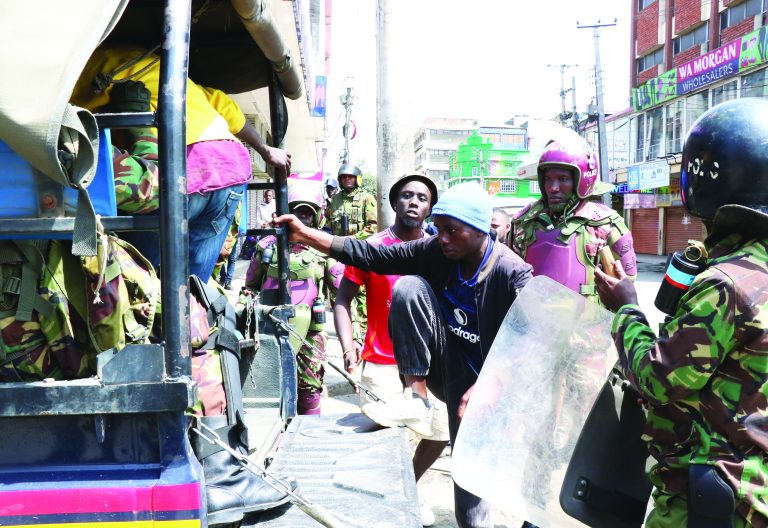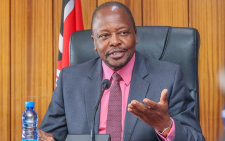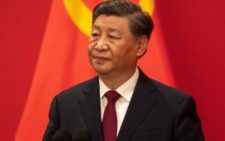Understanding history of protests in Kenya

Kenya has never lacked voices, but it has often lacked a listening ear. From the dawn of colonial conquest to the digital defiance of Generation Z, protest has remained the most consistent and revealing expression of Kenyan political life.
Far from being a symptom of breakdown, protest in Kenya is an affirmation of belief in something better—a nation worth fighting for.
As a historian familiar with African political movements and global protest traditions, I am convinced that protest is not the antithesis of order—it is the heartbeat of democratic renewal.
From Berlin to Bangkok, from Nairobi to New York, protest has consistently reshaped the boundaries of the permissible, the political, and the possible.
In Kenya, its trajectory tells a deeply local story—but one echoed in struggles elsewhere.
In the early 20th century, long before formal political parties took shape, Kenyan communities expressed their discontent in organised and strategic ways.
The Maasai contested forced relocations under the 1904 and 1911 colonial treaties; the Digo people resisted taxation and land grabs in 1913; and Harry Thuku’s arrest in 1922 triggered one of Nairobi’s first mass protests, led boldly by women.
These movements prefigured a civic tradition in which protest was not chaos, but the voice of the governed reclaiming their agency.
That tradition echoes global anticolonial and civil rights struggles. In India, Mahatma Gandhi’s 1930 Salt March defied colonial economic injustice, much as Kenyan resistance challenged forced labour and taxation.
In the United States, the Montgomery Bus Boycott of 1955 catalysed a broader civil rights movement grounded in mass civil disobedience.
In South Africa, the 1976 Soweto Uprising, sparked by schoolchildren protesting the imposition of Afrikaans, transformed the anti-apartheid movement.
These events, like Kenya’s Mau Mau rebellion in the 1950s, were not just political flashpoints—they were civic awakenings.
The Mau Mau struggle was a response to systematic land dispossession and political exclusion.
Though heavily mythologised and demonised by colonial authorities, the movement embodied the moral force of a people reclaiming their humanity.
Its legacy resonates with other postcolonial struggles—from Vietnam’s resistance to French rule to Algeria’s bloody war for independence.
Protest, in these contexts, was the language of those denied every other means of participation.
Yet independence did not resolve the contradictions between power and protest. Kenya, like many postcolonial states, experienced a democratic deficit.
Leaders inherited colonial institutions designed to dominate, not to serve. Kenyatta’s and Moi’s governments marginalised dissent, even as economic and political pressures mounted.
But Kenyans, in keeping with their civic tradition, resisted. Journalists, clergy, students, and opposition politicians endured arrests, torture, and exile—but they spoke.
And in speaking, they kept the idea of a freer Kenya alive.
This mid-to-late 20th-century wave of civic resistance mirrored global democratic transitions. Chile under Pinochet, South Korea during the Gwangju Uprising of 1980, and the Philippines during the 1986 People Power Revolution all witnessed mass civilian mobilisations against authoritarianism.
In each case, protest was the catalyst—not the culmination—of reform. In Kenya, the 1990 Saba Saba protests played that same role, forcing the repeal of Section 2A and reintroducing multiparty democracy.
The 2010 Constitution was meant to be the apex of that journey—a social contract grounded in inclusion, rights, devolution, and accountability.
Yet its implementation has remained partial. Deep inequalities, elite impunity, and a slow erosion of public trust continue to provoke discontent.
That frustration found a powerful outlet in 2024, when the Finance Bill proposed new taxes on essentials—bread, fuel, mobile money, and digital content.
For many Kenyans, especially the youth, this was more than a tax issue. It symbolised a government increasingly detached from the lived realities of its people.
What followed was one of the most significant citizen-led movements in Kenya’s recent history.
Organised not through traditional political parties or trade unions, but through TikTok, Twitter, and encrypted messaging platforms, Kenya’s Gen Z defied expectations.
Their protests were peaceful, creative, and decentralised.
Their slogans were witty; their demands, clear. They shared tactics with global digital protest cultures—from the Hong Kong Umbrella Movement to Nigeria’s #EndSARS uprising and the 2019–2020 Chilean protests.
In each of these, youth demanded dignity in governance and an end to systemic inequality.
The turning point came on June 25, 2024, when protestors stormed Parliament. The state responded with tear gas and live ammunition, claiming at least 19 lives.
Yet, rather than silencing dissent, this violence amplified it. President William Ruto, facing mounting pressure, withdrew the Finance Bill the next day.
It was a rare moment in Kenyan history when digital civic energy decisively altered government policy.
But the movement did not end. In July 2025, the unexplained death of an activist in police custody sparked new outrage. Saba Saba, the historic day of protest in Kenya’s democratic calendar, became the scene of fresh demonstrations.
However, we must speak frankly: some of the protests that began with high moral purpose were marred by actions that betray that very spirit.
The looting of shops, burning of public buildings, and destruction of private property must be unequivocally condemned.
Protest is a sacred right in any democracy—but it is not a license for lawlessness. Violence and vandalism not only hurt innocent livelihoods but also weaken the legitimacy of the cause itself.
When protests turn into riots, they shift public focus away from justice and reform and onto chaos and fear.
This is a lesson from history—from the discredited extremes of the Yellow Vest movement in France to the violent fringes of the 2021 Capitol riot in the United States.
Kenya must learn it, too. If protest is to retain its noble role in shaping governance, it must remain peaceful, principled, and disciplined.
What links these global movements—whether in Minneapolis, Lagos, Santiago, or Nairobi—is a common realisation: that governance without justice is simply another form of control.
Protest, therefore, becomes the last line of defence for the citizen. It is not a breakdown of order—it is a response to its absence.
That said, protest is not a panacea. It alerts, but does not administer. It must be followed by robust civic education, engagement with institutional processes, and a long-term vision.
Kenya’s youth must transform protest into policy-making, whether at the county-level participation, into budget scrutiny and electoral vigilance.
The path from resistance to renewal must pass through responsible leadership and transformative engagement.
For the state, the lessons are just as urgent. Suppression has never created stability.
Whether in Egypt’s Tahrir Square, Sudan’s 2019 revolution, or even France’s Yellow Vest movement, excessive force has only deepened polarisation.
Kenya must resist the temptation to criminalise its own conscience but understand it. Protesters are not enemies—they are messengers.
Institutions, too, must rise to the challenge. Parliament must recover its representational soul. The police must embody service, not coercion.
Civil servants must serve citizens—not power. The constitutional promise must become a lived reality. If it does not, protest will return—not as a surprise, but as a necessity.
What history teaches us, both in Kenya and globally, is that nations are not destroyed by protest. They are destroyed by indifference.
The writer is a Lecturer, Historian, Political Commentator and UASU Chapter Trustee at Alupe University, Kenya















